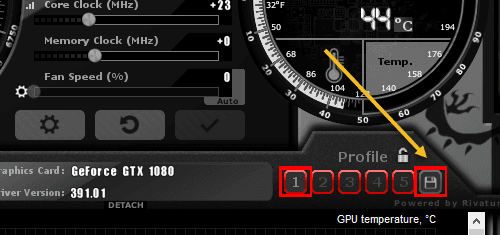


If you increase Core Clock and Memory Clock in small increments and test thoroughly between each setting, you will likely end up crashing the benchmark or blue screening at some point.

Locking the voltage and frequency helps to prevent frame skips, drops, and stuttering.īefore any of the steps below, I recommend running a benchmark.įor this guide, I will be using Forza Horizon 4’s built in benchmark tool at Ultra settings on 1080p with AA maxed. This method ensures that the GPU does not auto-modulate voltage and frequency. Instead of simply adjusting the core and memory offsets, we are going to use a stricter method for overclocking. You are the one responsible for your individual GPU settings, not me.įollow along with the guide and use the general advice given, in addition to your own research to OC your GPU. Your specific GPU settings will be different than what is outlined in this guide.


 0 kommentar(er)
0 kommentar(er)
